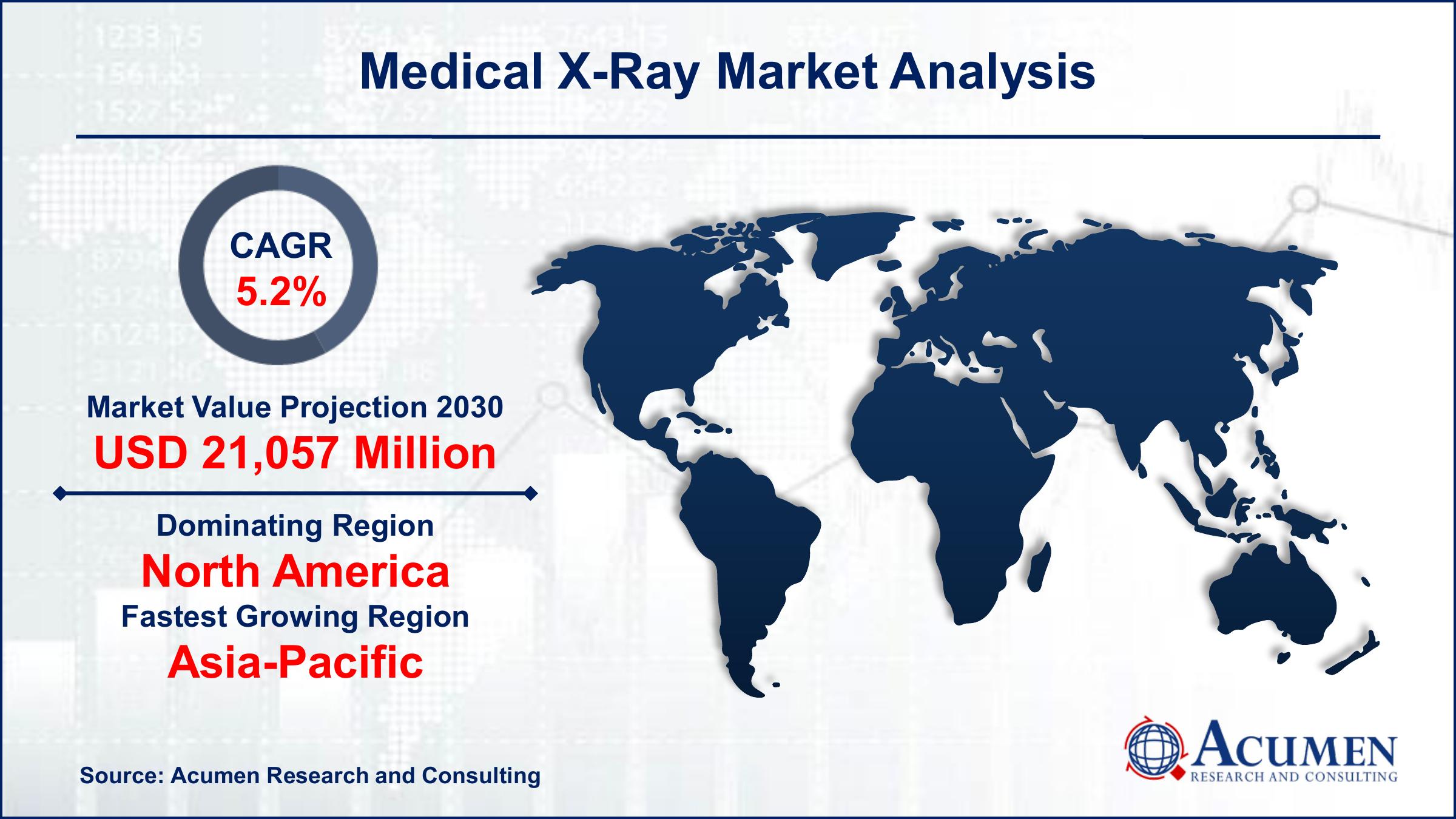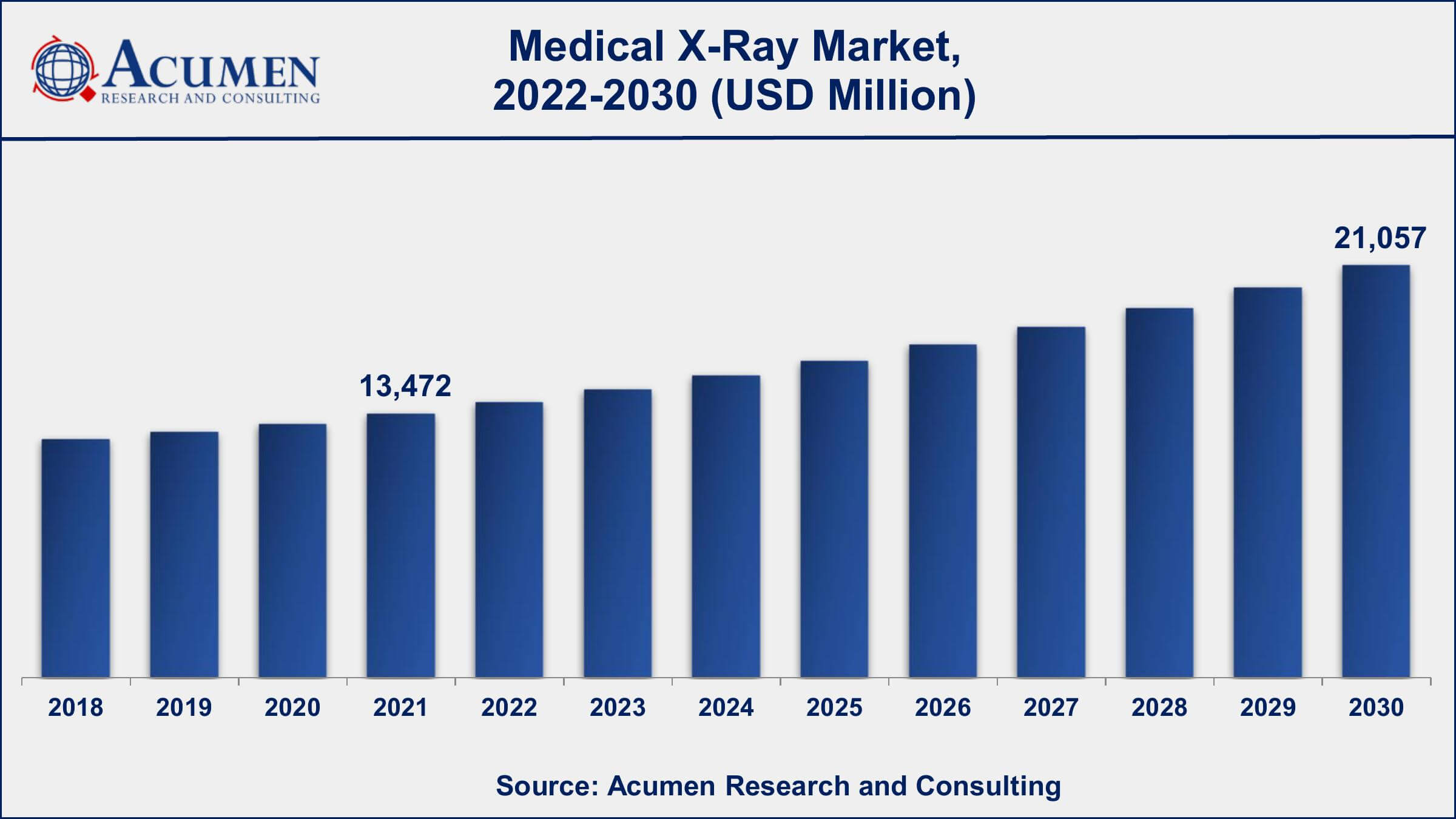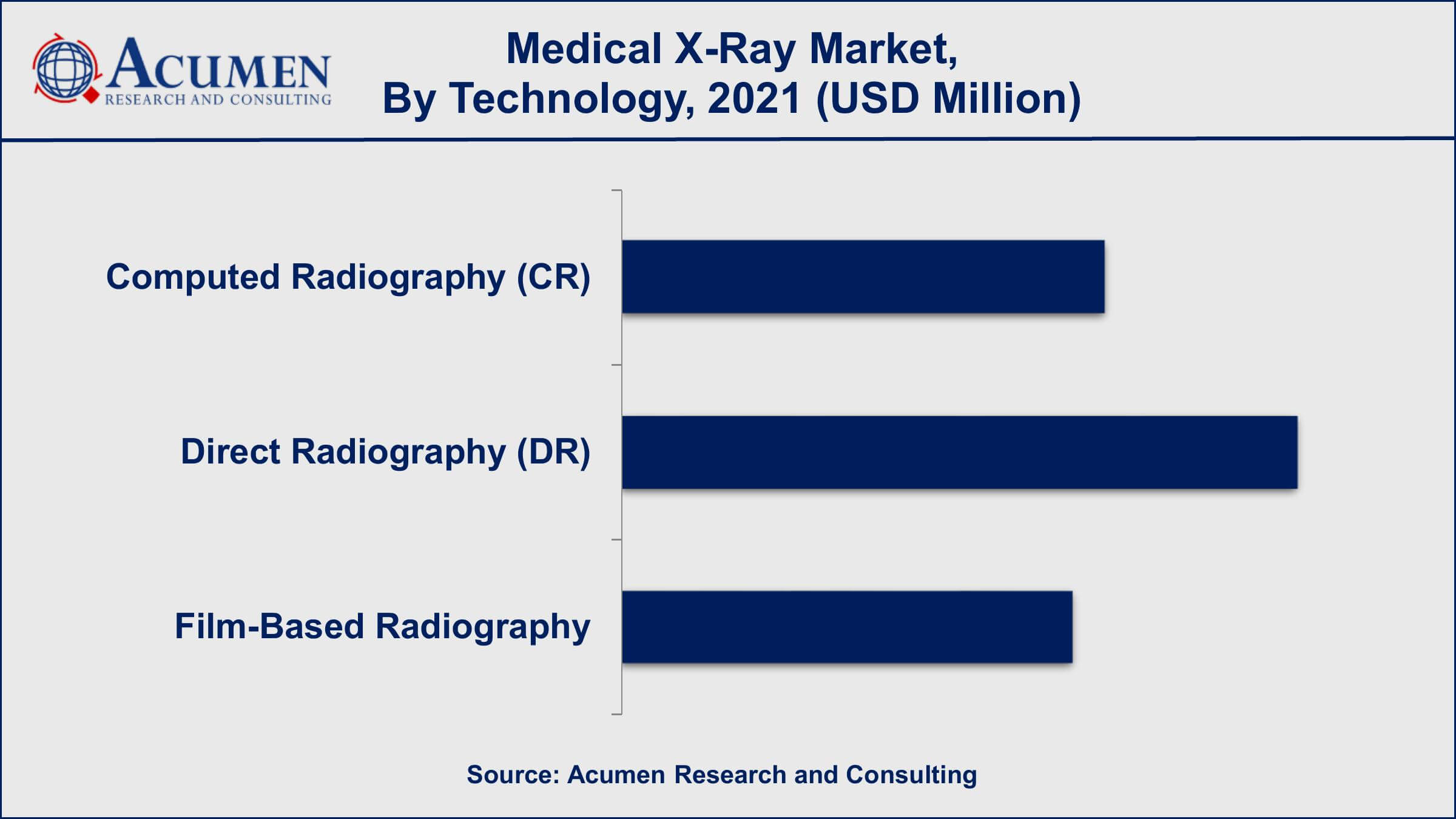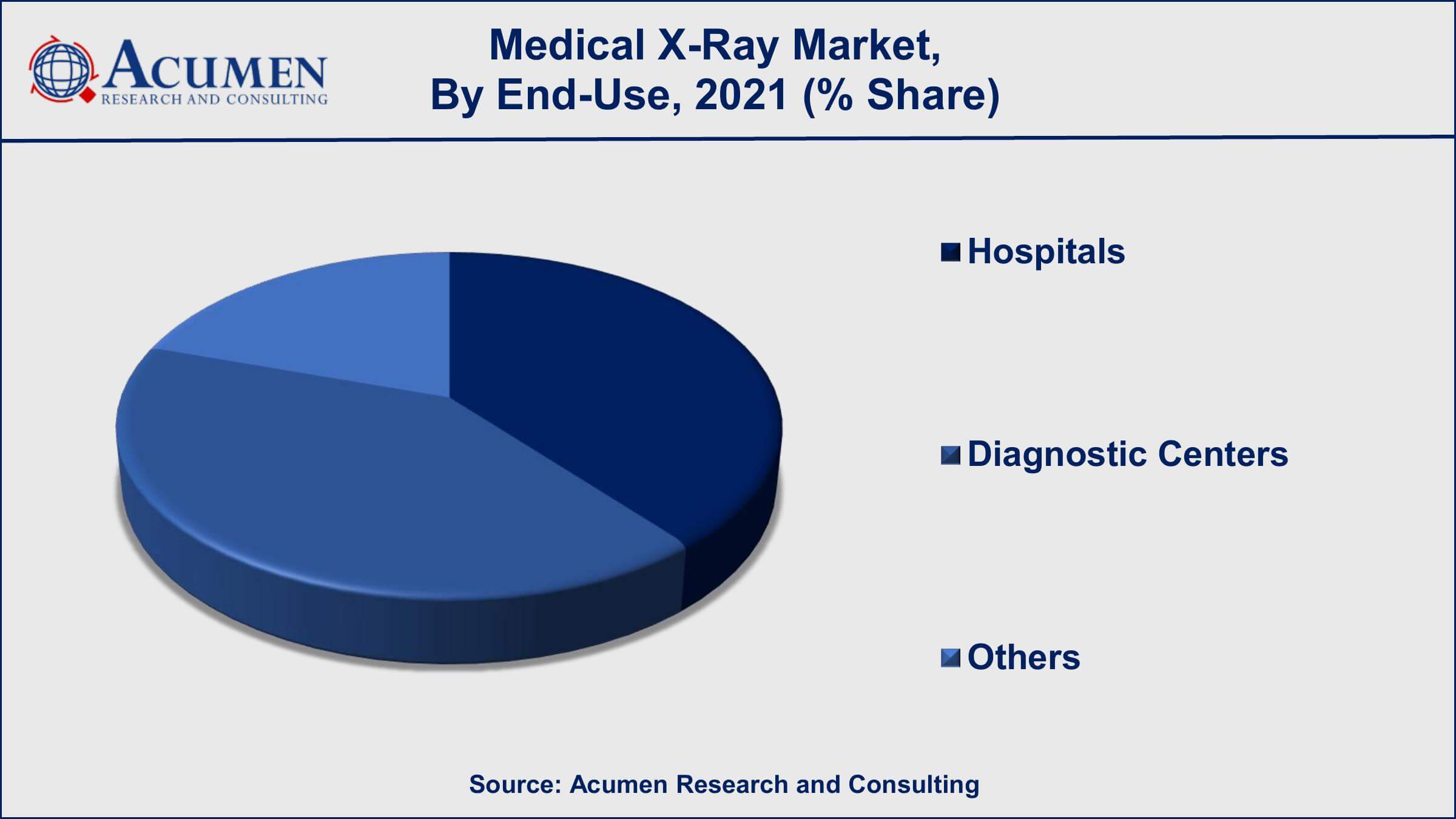November 2022
Explore the thriving medical x-ray market in 2022 and forecast till 2030. Discover its size, growth, share, and key trends. Expert analysis of technology, applications, and leading companies in the industry.
The global Medical X-Ray Market size, valued at approximately US$ 13,472 Million in 2021, is poised for substantial growth, projected to reach around US$ 21,057 Million by 2030, with an impressive Compound Annual Growth Rate (CAGR) of 5.2% during the forecast period from 2022 to 2030.
An x-ray procedure is a widely employed diagnostic imaging method that enables medical practitioners to visualize internal structures of the human body without the need for invasive procedures. This non-invasive technique plays a pivotal role in the diagnosis, monitoring, and treatment of various medical conditions. X-rays utilize electromagnetic radiation, resembling visible light, to generate images of bodily tissues and structures. They are commonly used for diagnosing diseases affecting the chest and bones, offering a painless and efficient diagnostic tool.

Medical X-Ray Market Highlights

Market Growth Drivers
Market Restraint
Market Opportunities
Medical X-Ray Market Report Coverage
| Market | Medical X-Ray Market |
| Medical X-Ray Market Size 2021 | USD 13,472 Million |
| Medical X-Ray Market Forecast 2030 | USD 21,057 Billion |
| Medical X-Ray Market CAGR During 2022 - 2030 | 5.2% |
| Medical X-Ray Market Analysis Period | 2018 - 2030 |
| Medical X-Ray Market Base Year |
2021 |
| Medical X-Ray Market Forecast Data | 2022 - 2030 |
| Segments Covered | By Technology, By Type, By Portability, By Application, By End Use, And By Geography |
| Regional Scope | North America, Europe, Asia Pacific, Latin America, and Middle East & Africa |
| Key Companies Profiled | Canon Medical Systems, Carestream Health, Fujifilm Corporation, GE Healthcare, Hitachi Medical, Hologic, Konica Minolta, Koninklijke Philips N.V., Neusoft Medical Systems, and Siemens Healthcare. |
| Report Coverage |
Market Trends, Drivers, Restraints, Competitive Analysis, Player Profiling, Covid-19 Analysis, Regulation Analysis |
Covid-19 Impact on the Global Medical X-Ray Industry
The global medical x-ray industry experienced significant fluctuations due to the COVID-19 pandemic. Initially, there was increased demand for imaging examinations to detect COVID-19 in patients' chest X-rays and CT scans. However, many radiology practices were temporarily shut down, leading to a stabilization in demand. For instance, the American College of Radiology (ACR) discouraged the use of CTs and x-rays as the primary diagnostic tools for COVID-19, impacting the market negatively.
Market Dynamics
The growth of the global medical x-ray market is primarily driven by the increasing prevalence of chronic diseases, such as COPD, chronic bronchitis, and emphysema. Additionally, the rising incidence of bone fractures and injuries contributes to market expansion. However, concerns regarding the harmful effects of x-ray radiation remain a limiting factor.
Market Segmentation
The global medical x-ray market is segmented based on technology, type, portability, application, end-use, and geography.
Market By Technology

In 2021, the direct radiography (DR) segment held a significant market share in the technology category. DR systems offer superior image quality, dynamic range, and reduced radiation exposure, making them favored for orthopedic and dental diagnostics.
Market By Type
Digital x-ray systems are experiencing robust demand and are expected to witness accelerated growth. Government policies favoring digital systems are driving this trend, although analog x-ray systems currently maintain a substantial market share due to lower costs.
Market By Portability
Portable x-ray machines are poised to lead in the coming years due to their space efficiency, suitability for low-volume settings, cost-effectiveness, and rapid operation. In contrast, fixed x-ray rooms require dedicated space and specialized electrical equipment.
Market By Application
Among applications, mammography is expected to achieve substantial market growth due to its role in early breast disease detection. The rising prevalence of breast cancer is a key driver for the mammography segment.
Market By End-Use

Diagnostic centers dominate the end-use segment due to their accessibility to advanced equipment and the increasing preference for rapid x-ray examinations. Hospitals also contribute significantly to the market, driven by a growing number of hospital visits and the need for precise diagnostic tools.
Medical X-Ray Market Regional Overview
North America: The United States and Canada
Europe: The United Kingdom, Germany, France, Spain, and the rest of Europe
Latin America: Brazil, Mexico, and the rest of Latin America
Asia-Pacific: China, Japan, India, Australia, South Korea, and the rest of Asia-Pacific
North America is expected to maintain its market leadership, driven by a high prevalence of chronic diseases, an aging population, advanced healthcare facilities, and increased investment in advanced x-ray technology.
Competitive Landscape
Key players in the medical x-ray market include Canon Medical Systems, Carestream Health, Fujifilm Corporation, GE Healthcare, Hitachi Medical, Hologic, Konica Minolta, Koninklijke Philips N.V., Neusoft Medical Systems, and Siemens Healthcare.
Looking for discounts, bulk pricing, or custom solutions? Contact us today at sales@acumenresearchandconsulting.com
November 2022
September 2023
April 2023
December 2019